What's Healthier, Red Bull or Monster? Sugar, Caffeine, and Ingredients Compared

When you’re tired, stressed, or just need a quick boost, Red Bull and Monster are two of the most common choices on the shelf. But which one is actually healthier? It’s not just about which one tastes better or has the cooler logo. The real difference lies in what’s inside the can-how much sugar, caffeine, and artificial junk you’re pouring into your body.
Red Bull vs Monster: The Sugar Showdown
Let’s start with sugar. A standard 250ml can of Red Bull contains 27 grams of sugar. That’s about 6.75 teaspoons. A 473ml can of Monster Energy? 54 grams. That’s over 13 teaspoons. If you’re drinking one Monster a day, you’re hitting the American Heart Association’s maximum recommended daily sugar intake for men-and nearly double it for women. Red Bull is better, but only by a margin. Neither is healthy if consumed regularly.
Sugar isn’t just empty calories. It spikes your blood glucose, crashes your energy later, and over time, increases your risk of fatty liver, insulin resistance, and weight gain. The World Health Organization says added sugar should be under 25 grams per day for optimal health. Red Bull barely fits. Monster blows right past it.
Caffeine: How Much Is Too Much?
Red Bull has 80mg of caffeine per 250ml can. Monster has 160mg per 473ml can. That means Monster packs nearly double the caffeine in a larger can. But here’s the catch: caffeine isn’t just about the number. It’s about how fast it hits you.
Monster’s caffeine is delivered with a mix of guarana, taurine, and B-vitamins. Guarana is a plant that naturally contains caffeine-sometimes even more than coffee beans. So when you see 160mg on the label, you’re actually getting more than that because guarana adds extra. Red Bull’s caffeine is synthetic, but it’s measured and consistent.
The FDA recommends no more than 400mg of caffeine per day for healthy adults. That’s about five Red Bulls or two and a half Monsters. But if you’re also drinking coffee, tea, or soda, you’re already close to that limit. One Monster before work? Fine. Two? You’re flirting with jitteriness, anxiety, or even heart palpitations.
Other Ingredients: What Else Is in There?
Both drinks include taurine, B-vitamins, and glucuronolactone. These aren’t harmful on their own. Taurine is an amino acid your body makes naturally. B-vitamins help convert food into energy. Glucuronolactone is a compound found in connective tissue-used here as a preservative.
But Monster adds extra ingredients Red Bull doesn’t: L-carnitine, inositol, and maltodextrin. L-carnitine is often marketed as a fat-burner, but there’s no strong evidence it helps when taken in energy drinks. Maltodextrin is a processed starch that spikes blood sugar even faster than regular sugar. Inositol is generally safe, but it’s not doing anything meaningful for energy.
Red Bull keeps it simple: sugar, caffeine, taurine, B-vitamins, citric acid, and sodium bicarbonate. Fewer additives. Fewer unknowns. That’s a win for transparency.
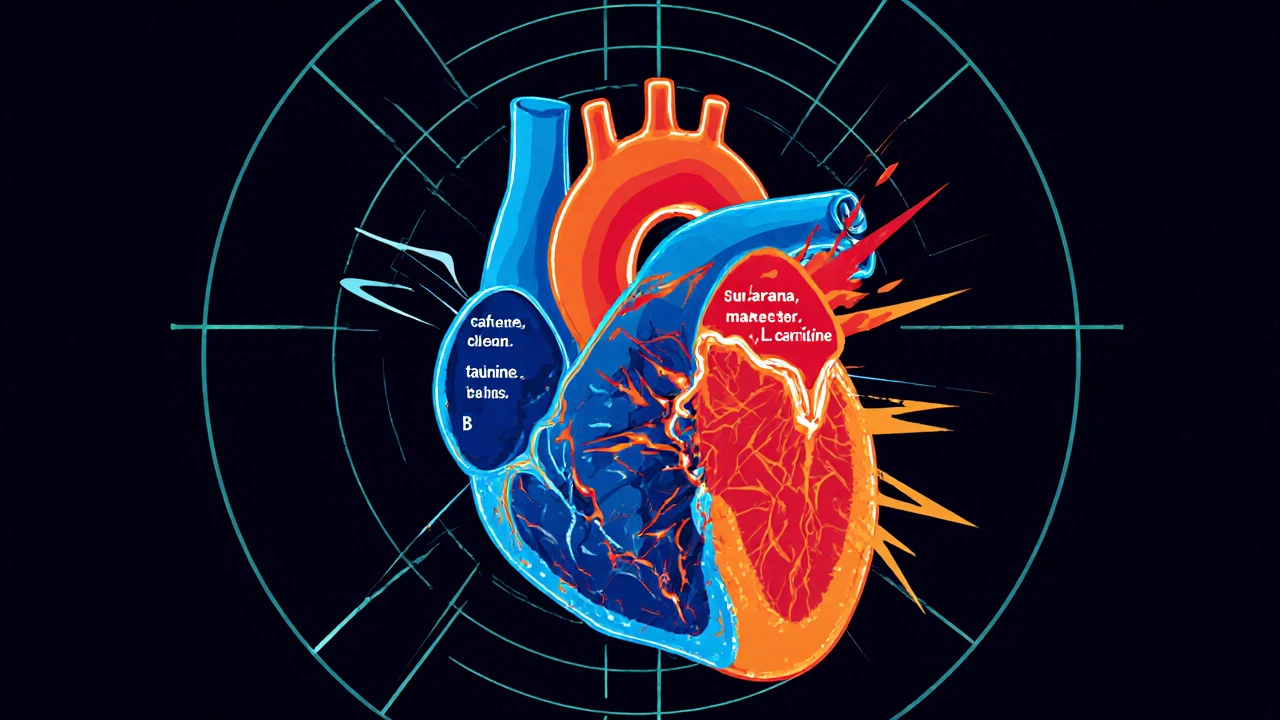
Calories and Artificial Sweeteners: The Diet Versions
If you’re trying to cut calories, both brands offer zero-sugar options. Red Bull Sugarfree uses aspartame and acesulfame K. Monster Zero Ultra uses the same sweeteners, plus sucralose. All three are FDA-approved, but they’re not harmless.
Some studies link artificial sweeteners to changes in gut bacteria and increased sugar cravings. A 2023 review in the journal Nutrients found that people who drank diet energy drinks regularly were more likely to gain weight over time-not less. Why? Your brain expects calories when it tastes sweetness. When it doesn’t get them, it messes with your hunger signals.
So if you’re switching to sugar-free just to lose weight, you might be trading one problem for another.
Who Should Avoid These Drinks?
Children and teens should not drink energy drinks at all. The American Academy of Pediatrics says they pose serious risks to developing hearts and brains. Pregnant women should avoid them too-high caffeine intake is linked to low birth weight and preterm labor.
People with heart conditions, high blood pressure, or anxiety disorders should steer clear. Caffeine can trigger arrhythmias and panic attacks. Even healthy adults who drink these daily may develop tolerance, needing more to feel the same effect-and that’s how dependence starts.
What’s Actually Healthier?
Neither Red Bull nor Monster is a healthy choice. But if you’re forced to pick one, Red Bull is the lesser of two evils. Smaller can. Less sugar. Less caffeine. Fewer mystery additives. That’s it.
But here’s the truth: the healthiest energy drink is water with a splash of lemon, a good night’s sleep, or a 10-minute walk outside. If you’re relying on these drinks to get through your day, it’s not the drink that’s the problem-it’s your routine.
Try this: swap one energy drink a week for green tea. It has caffeine, antioxidants, and L-theanine, which smooths out the jitters. Or make a homemade version: brew strong black tea, add a teaspoon of honey, and a pinch of sea salt. You’ll get the boost without the crash.
Energy drinks aren’t evil. But they’re not fuel. They’re a shortcut-and shortcuts often lead to detours you didn’t plan for.
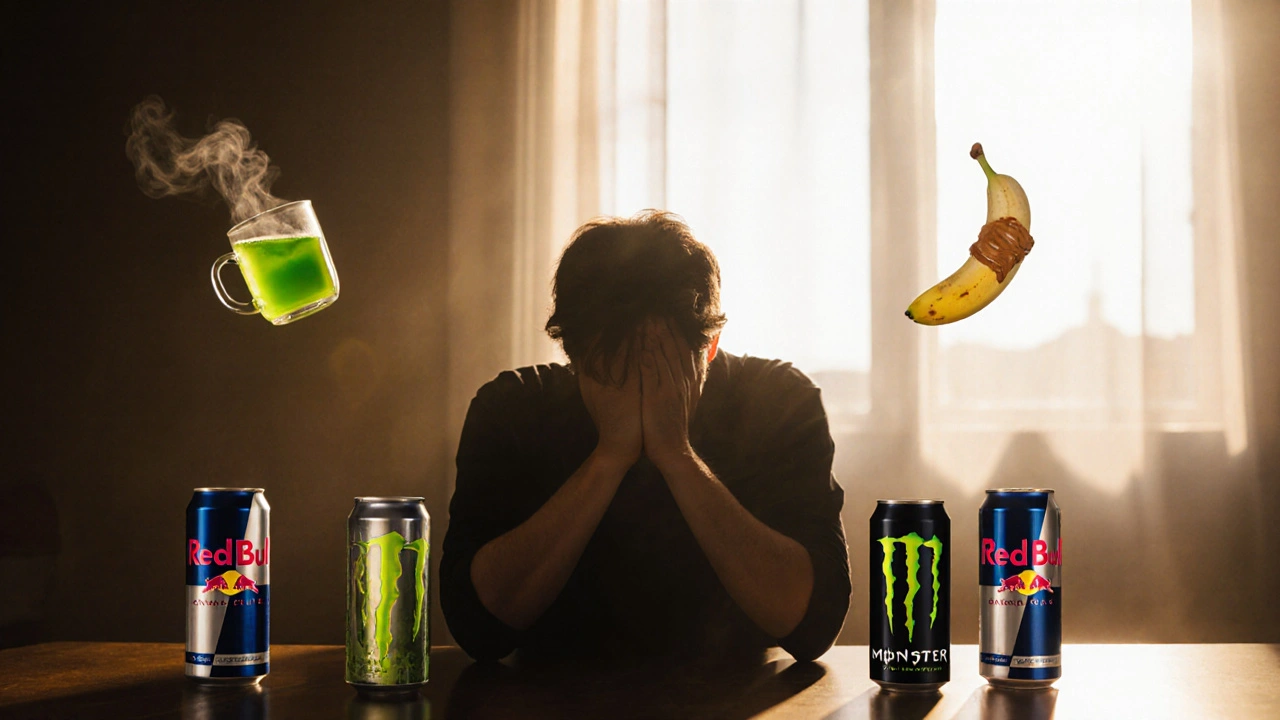
Quick Comparison: Red Bull vs Monster (Standard Cans)
| Ingredient | Red Bull | Monster |
|---|---|---|
| Calories | 110 | 210 |
| Sugar | 27g | 54g |
| Caffeine | 80mg | 160mg |
| Artificial Sweeteners (diet versions) | Aspartame, Acesulfame K | Aspartame, Sucralose, Acesulfame K |
| Additional Ingredients | Taurine, B-vitamins, citric acid | Taurine, B-vitamins, guarana, L-carnitine, maltodextrin, inositol |
Frequently Asked Questions
Is Red Bull healthier than Monster?
Yes, in most cases. Red Bull has less sugar, less caffeine, and fewer additives per serving. A 250ml can of Red Bull is easier to fit into a balanced diet than a 473ml Monster. But neither is healthy for daily use.
Can I drink Monster every day?
It’s not recommended. Drinking Monster daily means you’re consuming over 50g of sugar and 160mg of caffeine every day. That increases your risk of weight gain, tooth decay, high blood pressure, and sleep problems. Even if you feel fine now, long-term use can quietly damage your metabolism and heart health.
Are sugar-free energy drinks better?
They’re lower in calories and sugar, but not necessarily healthier. Artificial sweeteners like aspartame and sucralose can still trigger cravings, disrupt gut bacteria, and lead to weight gain over time. They also don’t fix the underlying issue: relying on stimulants to mask fatigue.
What’s the safest energy drink?
There isn’t one. The safest option is no energy drink at all. If you need a boost, try green tea, black coffee, or a short walk. If you must use one, choose Red Bull Sugarfree in moderation-no more than one a week. Prioritize sleep, hydration, and whole foods instead.
Why do energy drinks make me crash?
The sugar and caffeine give you a quick rush, but your body responds by releasing insulin to lower blood sugar and blocking caffeine receptors. That leads to fatigue, brain fog, and irritability. This crash is your body’s way of saying: you’ve overloaded your system. It’s not a flaw-it’s a warning.
What to Do Instead
If you’re reaching for Red Bull or Monster because you’re tired, ask yourself: when was the last time I slept well? When was the last time I drank enough water? Did I eat a balanced meal today?
Energy drinks don’t give you energy. They trick your nervous system into thinking it’s energized. Real energy comes from rest, movement, and nutrition. A banana with peanut butter, a 20-minute nap, or 10 minutes of sunlight can give you a cleaner, longer-lasting boost than any can on the shelf.
Choose the drink that’s least bad-but don’t make it a habit. Your body doesn’t need artificial stimulation. It just needs to be treated well.

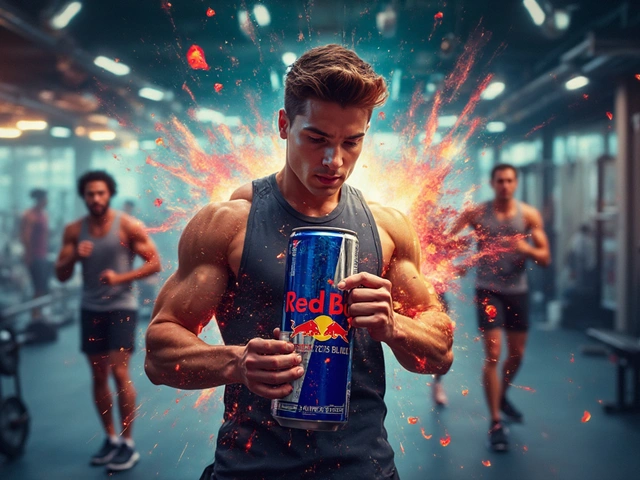

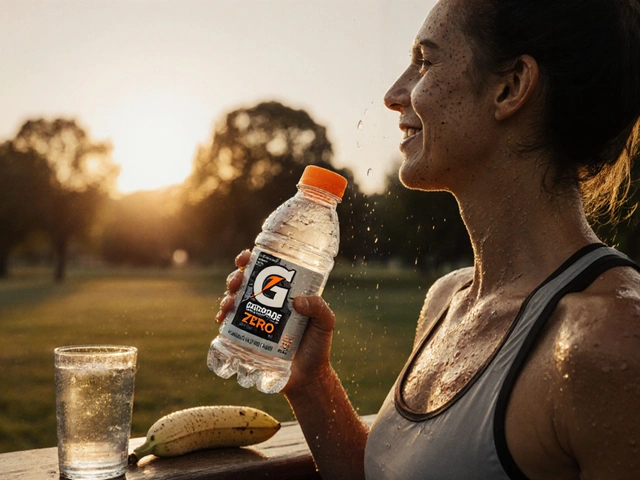
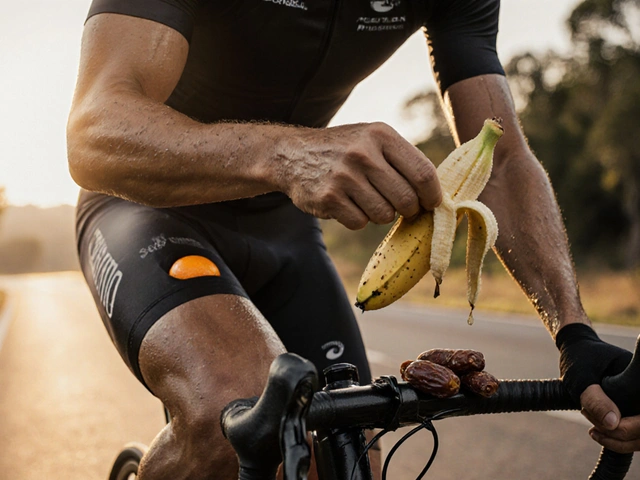
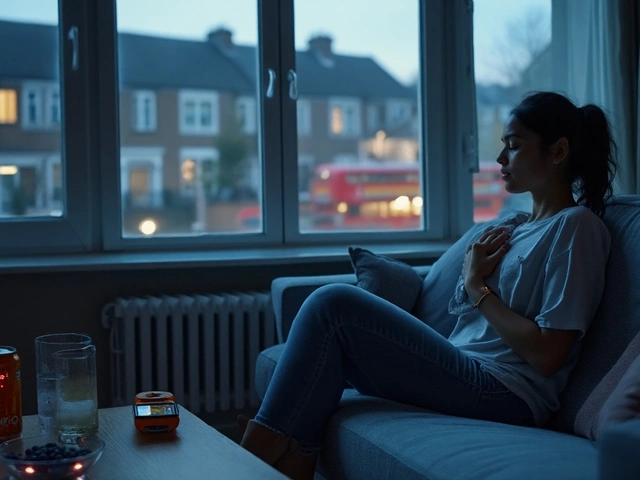
Comments (9)
Zach Beggs
17 Nov 2025
Honestly, I just drink black coffee now. Used to grab Red Bull when I was in college, but after a few months of daily use, I started having heart palpitations. Switched to tea and honestly? Better focus, no crash. Just saying.
Also, the part about sugar cravings from artificial sweeteners? Spot on. I tried Monster Zero for a while and ended up eating more candy. Weird, right?
Kenny Stockman
18 Nov 2025
Man, I used to think Monster was the king of energy until I read this. I down one after the gym every day like it’s water. Now I’m second-guessing everything. Guess I’m switching to green tea this week. Thanks for the reality check.
Also, that banana + peanut butter tip? I’m trying that tomorrow. If it works, I’m never touching these cans again. 😅
Antonio Hunter
18 Nov 2025
It’s interesting how we treat energy drinks like they’re vitamins instead of what they are - highly processed stimulant cocktails with sugar and chemical additives. The real issue isn’t which brand is less bad, it’s that we’ve normalized needing artificial stimulation just to function. Our bodies aren’t designed to run on caffeine spikes and artificial sweeteners. We’ve outsourced energy to corporations that profit off our exhaustion. The fact that we even need to compare Red Bull and Monster like they’re two flavors of yogurt is a symptom of a much deeper cultural problem: we’ve forgotten how to rest.
And yes, the WHO recommendation is 25g of sugar per day - so even Red Bull is borderline. But most people don’t stop at one. They have one at 8 a.m., another at 2 p.m., and then a third after dinner because they’re still tired. That’s not energy. That’s dependency wrapped in a can.
Paritosh Bhagat
20 Nov 2025
Wow, this post is actually well-researched. Not like the usual Reddit garbage. But you missed one thing - guarana isn’t just ‘natural caffeine,’ it’s a legal loophole. Companies add guarana to pad the caffeine content without having to list it as ‘caffeine’ on the label. Sneaky. And maltodextrin? That’s just powdered sugar with a fancy name. You’re not fooling anyone.
Also, if you’re drinking energy drinks daily, you’re not ‘busy,’ you’re just bad at time management. Get some sleep, idiot. 😅
Ben De Keersmaecker
21 Nov 2025
Minor correction: Red Bull’s sodium bicarbonate is listed as ‘E500’ in the EU, and while it’s not harmful in small doses, it does contribute to sodium intake - which matters if you’re on a low-sodium diet. Also, citric acid in both drinks can erode tooth enamel over time, especially if sipped slowly. I’ve seen dentists recommend rinsing with water after consuming these, but nobody ever does.
And for the record, L-carnitine’s role in energy metabolism is still debated. Some studies show no effect in healthy adults. So yeah, Monster’s ingredient list is basically marketing fluff.
Aaron Elliott
22 Nov 2025
It is not a matter of ‘which is less unhealthy.’ It is a matter of epistemological fallacy: to presume that any of these products are ‘energy sources’ at all. Energy, in the biological sense, is derived from adenosine triphosphate, synthesized via oxidative phosphorylation in the mitochondria. These beverages do not produce ATP. They merely antagonize adenosine receptors and induce a transient sympathetic nervous system activation. The subsequent crash is not a side effect - it is the inevitable homeostatic correction. To consume them is to engage in a form of metabolic self-sabotage. One does not ‘fuel’ a car with gasoline that contains antifreeze. One does not ‘fuel’ a human body with chemically induced euphoria disguised as nutrition. The real question is not which can is better - it is why we have collectively surrendered to such a pathological paradigm.
Chris Heffron
23 Nov 2025
Just had my first Red Bull in 3 years… and I felt like a robot for 2 hours. Then crashed so hard I napped for 4 hours. 😅
Also, the banana + peanut butter idea? I’m stealing that. Thanks for the non-judgy advice. 🙌
Adrienne Temple
25 Nov 2025
I used to drink Monster every day after work. I thought I needed it to stay awake. Then I started waking up at 3 a.m. with my heart pounding. Went to the doctor - turned out my cortisol was through the roof. I switched to herbal tea and started walking after dinner. I sleep better, I’m less anxious, and I don’t feel like I need a chemical boost just to get through the day.
It’s not about the drink. It’s about listening to your body. 💛
Sandy Dog
25 Nov 2025
Okay, but what if I’m just a vampire who needs caffeine to survive? 😱 I’ve been drinking Red Bull since I was 16 and I’m 32 now and still standing. My mom says I’m gonna die young but I’m like, ‘Mom, I have a Netflix account and a 30-minute nap routine - that’s basically health.’
Also, I tried the green tea thing and it tasted like wet grass. I cried. I’m not ready to give up my sugar rush. 🥲
But… I did cut down to one a week. So… progress? 😅